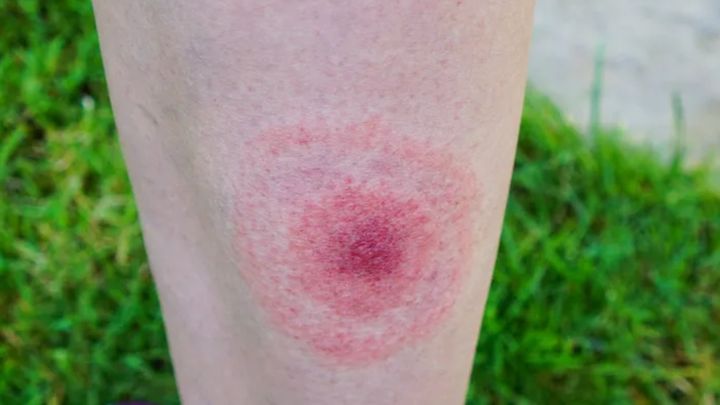
As we head into cold and flu season, many of us will start to experience runny noses, sore throats, and mild headaches.
But according to the NHS, flu-like symptoms can very rarely also be a sign of a lesser-known infection when accompanied by a particular type of rash.
Lyme disease, which affects around 2-3,000 people in Wales and England each year, is a tick-borne infection.
The government says that ticks are more likely to bite in the spring and summer months, but they’re active to varying degrees year-round.
It’s not a big deal if it’s caught early, as treatment with antibiotics is effective.
However some longer-term untreated Lyme disease sufferers “may have long-term damage to their joints or the nervous system.”
How can I spot the condition?
It usually takes about one to four weeks after you’ve been bitten for symptoms to appear, but they can show up as long as three months later, the NHS says.
“A circular or oval shape rash around a tick bite can be an early symptom of Lyme disease in some people,” they say.
It can look like a bulls-eye target or a solid oval.
“The rash can have a darker or lighter area in the centre and might gradually spread. It’s not usually hot or itchy,” the NHS adds.
It can sometimes be accompanied by flu-like symptoms, like headaches, fatigue, a high temperature, feeling hot and shivery, and muscle and joint pain.
You do not need to have both flu-like symptoms and a rash to see your GP.
“If you become unwell (for example with a spreading circular rash, flu-like symptoms, nerve pain or a droop on one or both sides of the face) within a few weeks of being bitten by a tick, contact your GP or dial NHS 111 promptly” as early intervention is important, the NHS advises.
How is Lyme disease diagnosed?
It can be hard to definitively diagnose Lyme disease.
Though there are two blood tests doctors will try to detect the condition, these are not completely accurate.
If your doctor thinks you have Lyme disease, they’ll prescribe antibiotics.
For more severe cases, you might need intravenous antibiotics.
“Not everyone will realise that they were bitten by a tick, so you may still develop Lyme disease symptoms without remembering a tick bite,” the NHS shared.
“If you have a classic bullseye rash, then you should be treated for Lyme disease without the need for a test.”